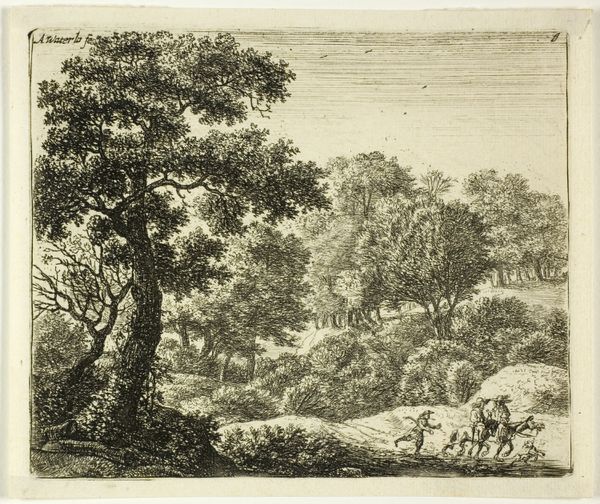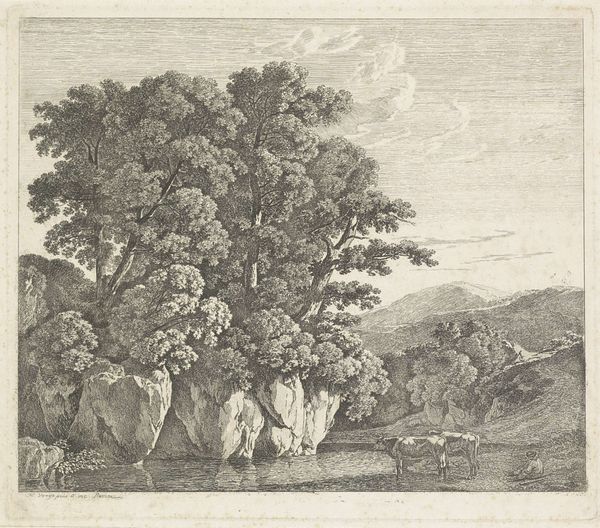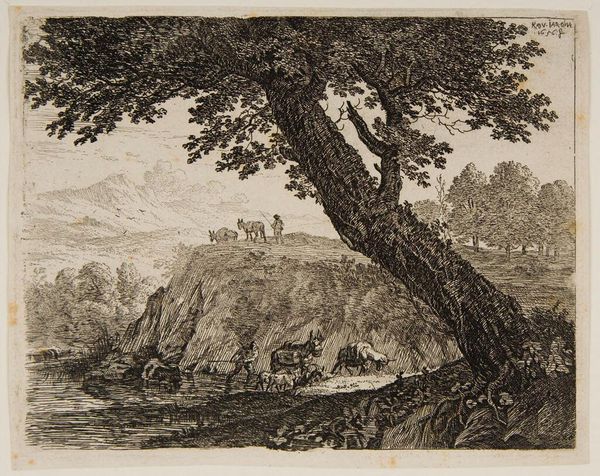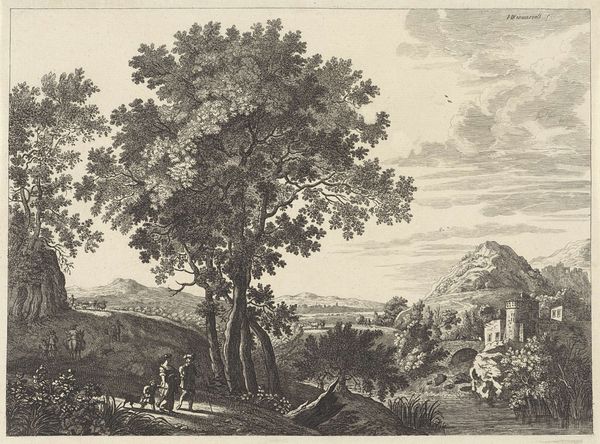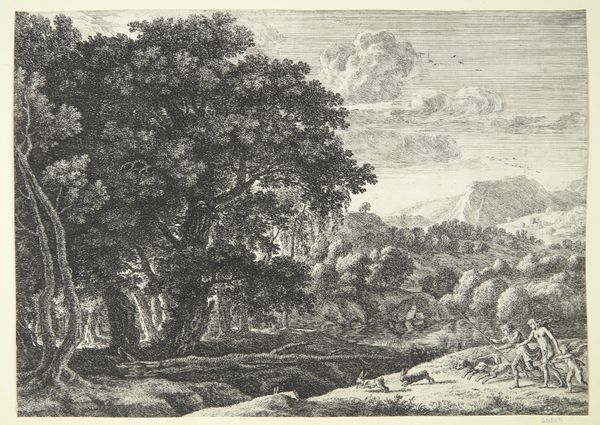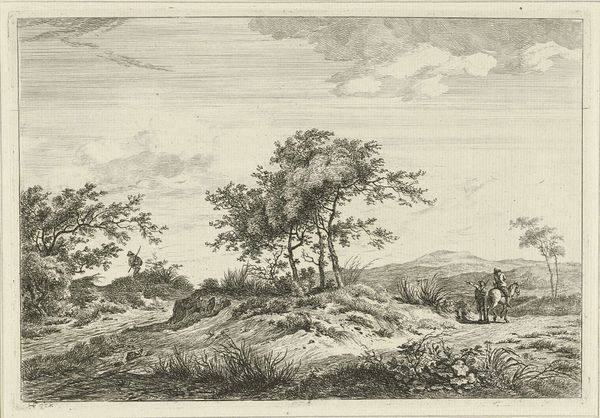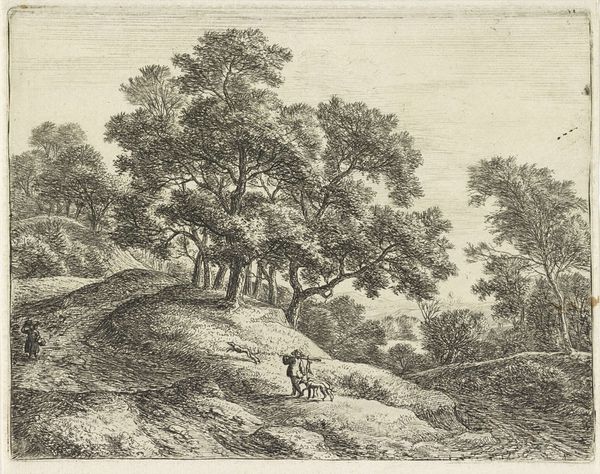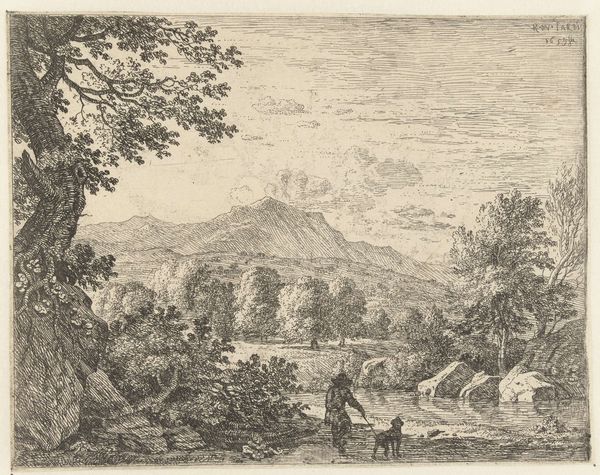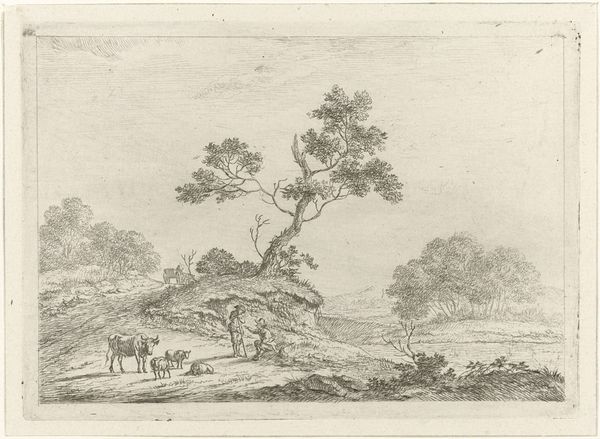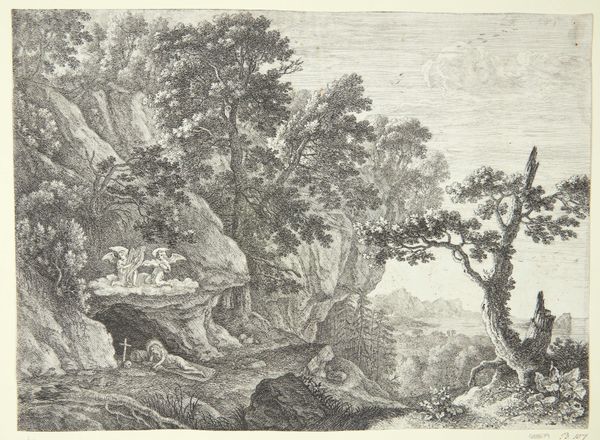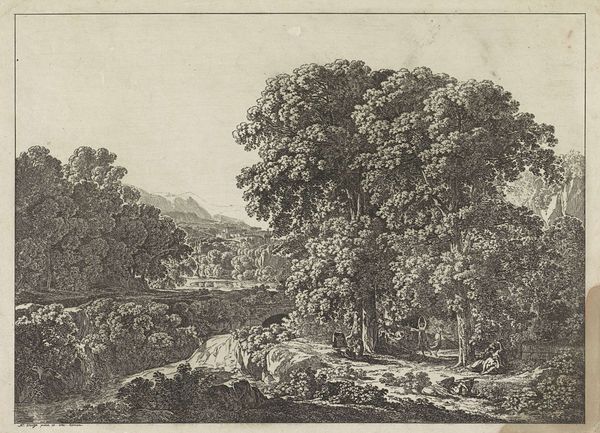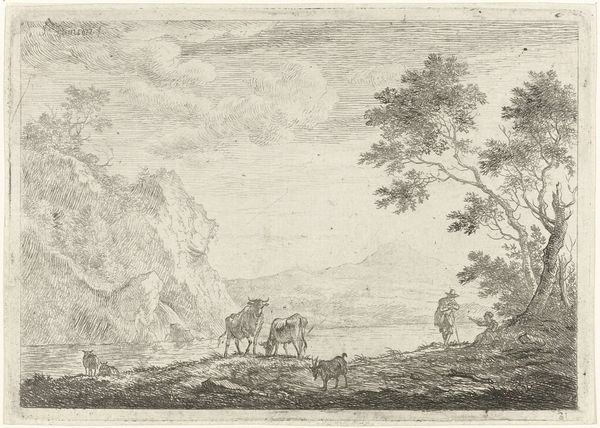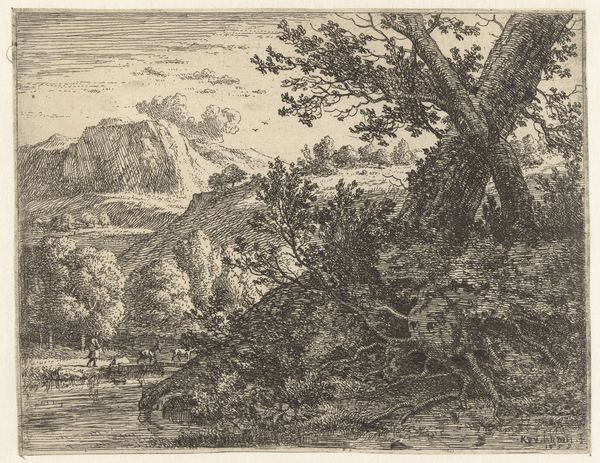
print, etching
#
baroque
#
dutch-golden-age
# print
#
etching
#
landscape
#
genre-painting
Dimensions: height 139 mm, width 178 mm
Copyright: Rijks Museum: Open Domain
Karel du Jardin’s "Landscape with two Mule Drivers," is an etching made in the Dutch Golden Age, a period marked by innovation in printmaking. Etching involves coating a metal plate with wax, scratching an image into the wax, and then immersing the plate in acid, which bites away the exposed metal. The plate is then inked and printed. Etching allowed for finer lines and more detail than traditional engraving, perfectly capturing the nuances of light and shadow. Here, the etched lines evoke a serene landscape, with mule drivers as common laborers central to the composition. The medium itself is indexical of broader economic shifts, with reproductive technologies like etching making art more accessible and contributing to the rise of a commercial art market. Du Jardin’s choice of etching—rather than painting—reflects a democratization of art production, a move away from unique, precious objects toward repeatable images. The very texture and tonality achieved through etching speaks to the changing landscape of artistic practice, blurring the lines between craft and fine art.
Comments
No comments
Be the first to comment and join the conversation on the ultimate creative platform.
